Mythology, Cosmology, and Symbolism of Ancient Egypt, Part 1 of 2: An Interview with Egyptologist, Dr. Edmund Meltzer A Guest Blog Post by Bonnie Bright, Ph.D.
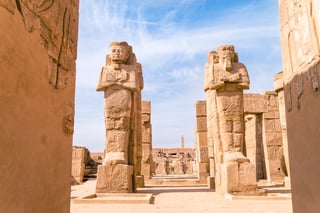 Ancient Egypt taps into the power of the mind’s eye. With its soaring pyramids, sacred tombs, complex hieroglyphs, ancient temple walls, legends of exotic pharaohs, and colorful pantheon of gods, it is easy to be captivated by the landscape of a culture that richly and deeply stirs the imagination.
Ancient Egypt taps into the power of the mind’s eye. With its soaring pyramids, sacred tombs, complex hieroglyphs, ancient temple walls, legends of exotic pharaohs, and colorful pantheon of gods, it is easy to be captivated by the landscape of a culture that richly and deeply stirs the imagination.
Egyptologist Dr. Edmund Meltzer had a ”predilection for ancient things and the distant past” from a very early age. His supportive parents nurtured his interests with books about ancient civilizations and mythology. Growing up in New York City, he had easy access to the Brooklyn and Metropolitan Museums, and to excellent second-hand bookstores where he browsed relics and acquired a wide assortment of contemporary and antique Egyptological books. He began to study hieroglyphs, and decided he was going to be an Egyptologist by the time he entered high school.
Through his undergraduate and graduate studies in Near Eastern Languages and Studies, as well as American archaeology, Edmund met librarians, professors, scholars, and other Egyptologists who strongly influenced his passion. His long and illustrious career includes work in Egypt as a site supervisor on the Akhenaten Temple Project–East Karnak Excavation, as well as being a researcher, teacher, fellow, journal editor, professor, and tour lecturer. Among his many achievements, he has authored a large body of scholarly publications, many of which can be found online.
Pacifica Graduate Institute recently invited Edmund to teach in the Mythological Studies program. He graciously shared his prolific knowledge and discussed the fascinating ancient past of Egypt and the Near East with me in a written exchange.
* * *
BB: Jung believed the archetype is a unifying factor between the psyche and the material realm, and the idea of death as a precursor to rebirth was a common archetypal motif found in ancient Egypt. Can you share some of the ways this shows up in ancient Egyptian myth, history, cosmology, and/or tradition, and provide your perspective?
EM: There are indeed many variations, or incarnations, of the fundamental idea of death as a precursor to rebirth in ancient Egyptian religion and symbolism, and it is one of the themes that I explore in my course. The first and perhaps most basic, is that the death of the individual is the precursor to a resurrection which is not only rebirth, but transfiguration into a deified being.
The sky-goddess Nut, often shown on the inside surface of the coffin lid, arching over the dead body, was believed to be instrumental in bringing about the person’s rebirth just as the newborn sun emerges from the womb of Nut every morning. In the Osiris myth, the death and dismemberment of Osiris precedes his reintegration and resurrection as the king of the Underworld, through which Isis conceives their son Horus. Each living king in ancient Egypt was considered the embodiment of Horus (and had a first “Horus name” in the official titulary); upon death, he (or very rarely, “she”) became Osiris, with his successor enthroned as the new Horus.
Returning to the sun, his daily birth is preceded by his death; the corpse of the sun-god is at the deepest point of the Underworld, and his rebirth is triggered by the nightly conjunction of Re and Osiris. This cycle is portrayed in the Amduat (literally, Book of What is in the Underworld), an important composition dealing with the nocturnal solar cycle, and the subject of numerous depth-psychological commentaries.
The motif of death followed by rebirth is also found in other ancient Egyptian literary works, such as the story of the Two Brothers, in which the younger brother Bata is killed and rises again repeatedly, until finally he is reborn as the successor to the Egyptian throne—or the masterfully told story of the fugitive Sinuhe, whose exile is at least metaphorically tantamount to death, and whose return is understood as rebirth.
One especially fascinating aspect is the often tantalizing parallels that can be made between religious texts, such as the Book of the Dead and the Amduat, and literature, including the “Tale of the Shipwrecked Sailor,” “Sinuhe,” and the story cycle of “Khufu and the Magicians” (Papyrus Westcar). Another area I find interesting is the role of art and iconography, such as the image of the goddess Nut and its relationship to hieroglyphic writing.
BB: These are all wonderfully illustrative examples of the archetypal (and also alchemical) idea of death and rebirth that was so prevalent in the culture. Marie-Louise Von Franz, a prominent Jungian and colleague of Jung’s, pointed out that, though all cultures hold the hope of life after death, ancient Egypt is the only culture that made it so concrete through mummification[1].The elaborate funerary process was tantamount to ensuring eternal life. With all these prevalent images and rituals in their cosmology, the boundaries between matter and spirit seem blurred; the mummies themselves were imbued with meaning, a sort of “sacred self” for most Egyptians.
Ultimately, this sacred embalming process constituted a rebirth into immortality through alchemy, transforming the body into something glorified and indestructible, an “eternal fruit” [2]. Not surprisingly, Egypt is said to be the birthplace of alchemy, the process by which matter is transformed. Can you offer some insights into the ritual process of mummification, the preparation of the tombs, and the spiritual and symbolic implications the idea held for the culture at the time?
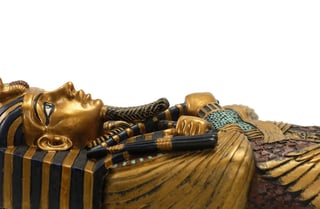
EM: Your question touches on several very important points. Not only did mummification and its accompanying ritual ensure eternal life and bring about a rebirth into immortality as you say, it transformed the dead person into a god, a divine Osirian being. Egyptologist Lana Troy published an excellent article, “Creating a God: The Mummification Ritual,” making that point (Bulletin of the Australian Centre for Egyptology 4 (1993) 55-81); Susanne Töpfer, who specializes in ritual texts, has also published a new complete edition of the Egyptian texts of the mummification ritual.
To characterize the mummy as “something glorified and indestructible” and a “sacred self” is extremely apt, since the ancient Egyptian word for “mummy,” sahu, means something like the “noble one.” When you suggest that “the boundaries between matter and spirit seem blurred,” you are pointing to a key distinction between the ancient Egyptian and the widespread modern Western perspectives.
The ancient Egyptians defined several aspects of the self or personality that moderns interpret as spiritual—the ka, the ba, the akh—but their culture didn’t have a spirit-body dualism similar to today’s prevalent religions and philosophies. Although modern authors commonly translate those terms as “spirit,” “soul,” and analogous terminology, when Christianity became established in Egypt, those ancient words were not used for the Biblical concepts of “soul” and “spirit”—the Greek words psyche and pneuma were. I think this shows that the native Egyptian words did not really equate to the newly introduced concepts. As a generalization, I would suggest that the Egyptian concepts were felt as having a kind of materiality or corporeality different from the materiality of mundane material objects, but also different from the incorporeality that we associate with “soul” and “spirit.”
That brings us to alchemy and its connection with mummification, which has intrigued me for a long time. I discuss mummification as a prototypically alchemical act—and as possibly playing a role in the origin of alchemy—in two articles in the journal Discussions in Egyptology, issues 46 (2000) and 53 (2002), both of which are on my Academia.edu page [see link at end of article]. I must admit that I was not yet familiar with the work of von Franz when I wrote them, and was quite excited when I found that she had also made that connection.
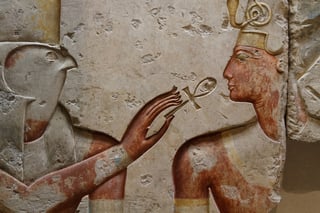 Transformation is, of course, fundamental in the resurrection-rebirth-deification process—as it is in Egyptian religion as a whole. The inclusion of “transformation” in both the Coffin Texts and the Book of the Dead indicates that the ability to transform, or shapeshift, is important to the nature of the dead as “effective” (akh) beings, as well as a divine characteristic.
Transformation is, of course, fundamental in the resurrection-rebirth-deification process—as it is in Egyptian religion as a whole. The inclusion of “transformation” in both the Coffin Texts and the Book of the Dead indicates that the ability to transform, or shapeshift, is important to the nature of the dead as “effective” (akh) beings, as well as a divine characteristic.
The tomb itself is fraught with significance. It is liminal space, both geographically—usually situated in the western desert off the cultivation of the Nile Valley—and cosmically—being a part of both this and the other world, which is reflected in the Egyptian terminology for the tomb and the necropolis. Simultaneously, the tomb represents a microcosm (as does the temple), often with the ceiling painted as the starry sky. Yet another connection of the tomb relates to the houses of the living, sometimes indicated by decoration portraying a pavilion or an arbor. In this, as in any area of Egyptian imagery, we encounter what might be called a cornucopia of meaning.
BB: I really appreciate you pointing out the importance of the tomb as a microcosm. Of course, the alchemical saying, “As above, so below” applies here, as the tomb becomes the vessel or container in which the work of transformation takes place. Edward Edinger[3] reminds us that the tomb is a symbol of the unconscious as well as an alchemical vessel in which transformation occurred, and that Jung related it to the womb, suggesting the tomb is a place of the past that connects us with our deceased ancestors. As such, it is a place from which the psyche is born—that is, a connector to our psychic background. The exhaustive quest of the Egyptians for eternal life is analogous to that of the early alchemists who also sought a process that transcended death. From a depth psychological standpoint, this urge for renewal and regeneration—the ability to transcend the dark depths of death and emerge in divine form—might also be correlated with the hero’s journey in the process of individuation. In that archetypal idea, the hero has to make a difficult descent into darkness on the path to reunification with what Jung called the Self, the “god-within.”
In “Archetypes of the Collective Unconscious,” Jung reminds us the Egyptian pharaoh is referred to as “twice-born” (both human and divine)[4], and connects the archetype to its recurrence in Christian tradition, writing, "The Christian era itself owes its name and significance to the antique mystery of the god-man, which has its roots in the archetypal Osiris-Horus myth"[5].
Another archetypal idea with roots in Egyptian myth is related to judgment at death, specifically the custom of weighing the soul against a feather, described as follows: The god Anubis oversaw the embalming of the dead and the weighing of their hearts against the Feather of Truth, representing the goddess of truth, Maat. Thoth recorded the result. If the heart was heavier than the feather, the gruesome Ammit (The Swallowing Monster—part crocodile, part hippopotamus, part lion) devoured it. If the heart was balanced, Horus brought the new soul into the presence of Osiris and Isis to be welcomed to new life.
What do you make of these ancient alchemical practices involving death and rebirth in relation to the process of individuation, both personally and in regards to contemporary western culture? Is there something there we can actively draw from in modern times by making psychological correlations to the profound religious and spiritual traditions of ancient Egypt?
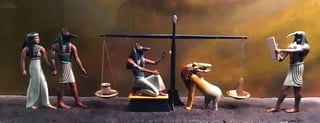 EM: Thank you for bringing up this central topic, the universal principle of Maat (also spelled Ma’at or Ma’et by some scholars). The feather, against which the heart is weighed, is the hieroglyph often used to write the word Maat. Maat is often translated as “truth,” “justice,” or “righteousness,” (and the adjective maa means “true,” “real,” “genuine,” or “just”), but it is fundamentally the divine order of creation, embracing the right order and harmony on all levels—interpersonal, social, political, natural.
EM: Thank you for bringing up this central topic, the universal principle of Maat (also spelled Ma’at or Ma’et by some scholars). The feather, against which the heart is weighed, is the hieroglyph often used to write the word Maat. Maat is often translated as “truth,” “justice,” or “righteousness,” (and the adjective maa means “true,” “real,” “genuine,” or “just”), but it is fundamentally the divine order of creation, embracing the right order and harmony on all levels—interpersonal, social, political, natural.
Upon his accession, every king committed to instituting and upholding Maat, as was done by the Creator-god; in fact, mythologically, Maat is the daughter of the sun-god Re. This has some very interesting implications. One is that Maat holds sway in the created world, but not the uncreated void or primeval abyss (called Nun), which still exists alongside the ordered creation and can be accessed at the lowest point of the underworld.
Nun is very ambivalent for the Egyptians; on the positive side, it is a source of continuous creation and renewal that fuels the continuation of existence. But at the same time it’s dangerous and threatening, because in Nun, the mooring and orientation of Maat does not exist. (This is discussed by Erik Hornung, an Egyptologist who is very conversant with depth psychology, worked with Jungian analysts, and has delivered many Eranos Foundation lectures; see especially his book Conceptions of God in Ancient Egypt: The One and the Many.)
A term frequently used as the opposite of Maat is isfet, translated as “chaos” or “disorder.” When, for instance, the desert encroaches on the fertile land, or the Nile flood is too low or disastrously high, or Egypt suffers defeat or falls into political and social fragmentation, it means that the forces of isfet are prevailing and Maat must be reasserted. According to the wisdom literature, everyone has the power to “do Maat.” Upon passing judgment, the dead person becomes maa-kheru (feminine maat-kheru), “true of voice,” often translated as “justified.”
Many Egyptologists, with a cultural and religious bias against things that can be characterized as “magic,” have regarded the Egyptian depiction of the judgment and the heart scarab text, not as testimony against the person, but more as a kind of “get out of jail free” card. I think this is missing the point, as do some colleagues, including Gerald E. Kadish and Terence DuQuesne. In declarations of innocence during the judgment, as well as some other parts of the mortuary literature, the dead person is affirming and committing himself or herself to Maat and to upholding the moral order of the universe.
It is also a fundamental aspect of Maat that balance is maintained or restored, and oppositions are reconciled. Thus, in the struggle between Horus and Set, after Set murders Osiris, the final decision awarding the kingship to Horus is enacted by a legal decision of the gods, not the result of a fight to the death (though Horus and Set fought for a long time and inflicted grievous injuries on one another). The two gods are reconciled, albeit tensely. Law and justice pervade the other world as well as this world—when Maat is in her proper place, that is.
An interesting related aspect of the Egyptian outlook was noted by William A. Ward—that the familiar “heroic age” mentality and epic genre, focused on incessant duels between rival champions, are largely absent from ancient Egyptian literature (until a very late set of compositions called the “Petubastis Cycle,” based on a period of fragmented kingdoms in the first millennium BCE).
Another important concept to keep in mind when considering the judgment and the overall dynamics of divine-human relations is that of divine grace, which was a prominent part of the Egyptians’ perceived universe, and one of my major interests in ancient Egyptian religion (see my articles “The Caring God” in Journal of the Society for the Study of Egyptian Antiquities 33 (2006), and “Cosmic and Personal” in Text and Community, vol. 2, on my Academia.edu page).
BB: For those of us who aren't familiar with Egyptology, could you please clarify what the "heart scarab" and the "heart scarab text" are? Is the text entreating the heart not to betray the wrongs that the person has done? And is this all considered "magic?" What are the meanings and implications?
EM: This question helps to focus on a fundamental question of definitions and assumptions that often lurk under the surface in discussions of religion, ritual, etc., especially cross-culturally. A heart scarab is a scarab, sometimes with the typical beetle shape, sometimes with the back partly carved with a human face and head; sometimes in the shape of the "heart" hieroglyph rather than a beetle. This is inscribed on its base with what I'm calling the “heart scarab text,” most often Chapter 30B of the Book of the Dead (less frequently Chapter 30A or 30), starting "My heart (of) my mother! My heart (of) my mother…” or, as recently suggested by John Gee, "My heart, my balance weight…”—which continues, "rise not up against me as a witness...do not create opposition against me…do not cause my name to stink…"
The text occurs in both full and abbreviated versions, depending on the size of the scarab. Thus, the person does seem to be telling or entreating the heart not to reveal wrongs that the person has done. (But I think it still might be open to discussion whether that represents a complete, objective understanding of those entreaties and their implications.)
This type of statement has been labeled or stereotyped as "magic" by almost all scholars at one time or another. Along with some other colleagues, I consider "magic" a very problematic category which is hard to define in a clear objective way. Labeling this type of text as "magic" goes along with other scholarly habits, for instance, the translation of the Egyptian word ra, meaning "utterance" (a quite neutral word in itself) as "spell" in almost all translations and discussions of the Book of the Dead. The Egyptian word generally translated as "magic" is hekau or heka, and, even if one considers the translation valid, by no means are all or most of these texts labeled by the Egyptians themselves as hekau/heka.
When I began to teach at Claremont Graduate School and joined the Coptic Text Seminar, Marvin Meyer and others working on the "Coptic Magical Texts Project" had decided that "magic" is essentially a cultural pejorative: "we" have "religion" and "prayers," but "they" have "magic" and "spells." My colleagues arrived at "ritual power" as a more neutral and broadly applicable term, cutting across both sides of the alleged "religion"/"magic" divide, a decision with which I strongly agreed. I discuss this at length in one of the introductory chapters of the book edited by Professor Meyer, entitled (rather ironically, at the publisher's insistence) Ancient Christian Magic: Coptic Texts of Ritual Power (see my Academia.edu page). Although not everyone agrees, I've found it a viable approach that helps to level the playing field and avoid the tendency to rank one tradition over others.
BB: It has been fascinating to learn about the nuances among concepts like magic and spells, religion, and prayers—as well as to contemplate some of the symbolism that appears in the history, myth, and cosmology of ancient Egypt. I’m particularly struck by the rich archetypal aspects that have emerged so far. When our conversation continues in Part 2 of this dialogue, we’ll be exploring more about the hieroglyphs, language, religion, and traditions of ancient Egypt, as well as hearing Edmund’s perspectives on how the culture and cosmology impact modern individuals today.
Access Part 2 of this article at pacificapost.com
Find out more about the M.A./Ph.D. in Mythological Studies Program at Pacifica.edu
Access articles and publications from Dr. Edmund Meltzer at www. independent.academia.edu/EdmundMeltzer
End Notes
[1] Marie Louise von Franz, quoted in Harris, 2001, Jung and Yoga: The Psyche-body Connection. Toronto, Canada: Inner City Books.
[2] See Edinger, 1995, The Mysterium Lectures: A Journey through Jung's Mysterium Coniunctionis. Toronto, Canada: Inner City Books.
[3] Also in Edinger, 1995. See previous reference.
[4] Jung, 1959, “Archetypes of the Collective Unconscious”, The Collected Works of C. G. Jung. Volume 9, Pt. 1. Princeton, NJ: Princeton University Press.
[5] Jung, 1961, Memories, Dreams, Reflections, p. 68. New York: Random House.
Edmund Meltzer, Ph.D.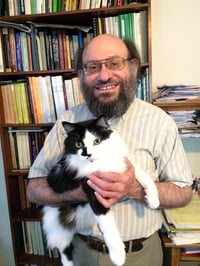 grew up in New York City, where he fell in love with Ancient Egypt and opera. He attended the Universities of Chicago (BA, Near Eastern Languages) and Toronto (MA, PhD, Near Eastern Studies), the University of Wisconsin–Stevens Point (public school teacher certification, German-Spanish-ESL) and several field schools in American archaeology.
grew up in New York City, where he fell in love with Ancient Egypt and opera. He attended the Universities of Chicago (BA, Near Eastern Languages) and Toronto (MA, PhD, Near Eastern Studies), the University of Wisconsin–Stevens Point (public school teacher certification, German-Spanish-ESL) and several field schools in American archaeology.
Dr. Meltzer has worked in Egypt as a site supervisor on the Akhenaten Temple Project–East Karnak Excavation, ARCE Fellow and tour lecturer. He has taught at the University of Toronto as a graduate student, the University of North Carolina–Chapel Hill, The Claremont Graduate School (where he was Associate Chair of the Religion Department), the Institute for the History of Ancient Civilizations in China, and the Wisconsin public schools, and he currently teaches Egyptian Mythology at Pacifica. He also taught an online course on the ancient Egyptian religion at Glyphdoctors.com.
He is a Board member of the Toronto-based Society for the Study of Egyptian Antiquities and an editor of its peer-reviewed journal; he has been active in the Society since the early 1970s. His major research areas include ancient Egyptian religion, language and texts, the history of Egyptology and the reception of ancient Egypt in the Classical and post-ancient world.
His work has appeared in many journals and edited volumes; publications include The Edwin Smith Papyrus (with Dr. Gonzalo Sanchez, MD) and contributions to Terence DuQuesne, et al., The Salakhana Trove: Votive Stelae and Other Objects from Asyut; Thomas Schneider, et al., Egyptology from the First World War to the Third Reich; several recent works in religious studies edited by J. Harold Ellens including Explaining Evil, The Destructive Power of Religion, and Text and Community; James Goehring, ed., The Crosby-Schøyen Codex; Marvin Meyer, ed., Ancient Christian Magic; Donald B. Redford, et al., The Akhenaten Temple Project Vol. 2; W. C. Watt, ed., Writing Systems and Cognition; Paul A. Kolers, et al., Processing of Visible Language 2; The Anchor Bible Dictionary; and The Oxford Encyclopedia of Ancient Egypt. Dr. Meltzer has lectured widely and is a frequent presenter at the American Research Center in Egypt, the Society for the Study of Egyptian Antiquities, and other meetings. He also loves cats and is thrilled to be teaching at Pacifica Graduate Institute.
 Bonnie Bright, Ph.D., earned her doctorate in Pacifica’s Depth Psychology program. She is the founder of Depth Psychology Alliance, a free online community for everyone interested in depth psychologies, and of DepthList.com, a free-to-search database of Jungian and depth psychology-oriented practitioners. She is also the creator and executive editor of Depth Insights, a semi-annual scholarly journal and regularly produces audio and video interviews on depth psychological topics. Bright has completed 2-year certifications in Archetypal Pattern Analysis via the Assisi Institute, in Indigenous African Spiritual Technologies with West African elder Malidoma Somé, and she has been extensively involved in Holotropic Breathwork™ and the Enneagram. She had the distinct pleasure of traveling to Egypt a few years ago during her time at Pacifica to better understand its culture and mythology, and treasures the journey as one of the most profound she has taken.
Bonnie Bright, Ph.D., earned her doctorate in Pacifica’s Depth Psychology program. She is the founder of Depth Psychology Alliance, a free online community for everyone interested in depth psychologies, and of DepthList.com, a free-to-search database of Jungian and depth psychology-oriented practitioners. She is also the creator and executive editor of Depth Insights, a semi-annual scholarly journal and regularly produces audio and video interviews on depth psychological topics. Bright has completed 2-year certifications in Archetypal Pattern Analysis via the Assisi Institute, in Indigenous African Spiritual Technologies with West African elder Malidoma Somé, and she has been extensively involved in Holotropic Breathwork™ and the Enneagram. She had the distinct pleasure of traveling to Egypt a few years ago during her time at Pacifica to better understand its culture and mythology, and treasures the journey as one of the most profound she has taken.



